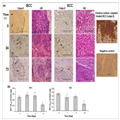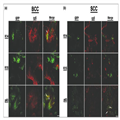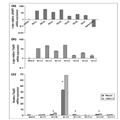Many states are waiting for a Supreme Court decision or even the
November election results, to see whether central elements of the new
law might be overturned or repealed. But that will be too late to start
work. By Jan. 1, 2013, the Obama administration will decide whether each
state is ready to run its own exchange or whether the federal
government should do the job instead.
Republican governors and state legislators across the country are split.
Some want to set up rudimentary exchanges with limited features — as a
defensive tactical maneuver — rather than cede control to Washington.
More-conservative Republicans do not want to do anything at all.
After a great deal of bickering and bargaining, the insurance exchanges
emerged as a centerpiece of the 2010 health care law, crucial to
achieving Mr. Obama’s promise of affordable coverage for all Americans.
The issue was a major topic of discussion over the weekend at the winter
meeting of the National Governors Association here, and it is expected
to come up Monday when governors meet with Mr. Obama at the White House.
Gov. Dave Heineman of Nebraska, a Republican who is chairman of the
governors association, said his state would not “default to the federal
government.” But he said “it would be a costly mistake to spend millions
of taxpayer dollars” building an exchange before the Supreme Court
issues its decision in a challenge to the health care law, which is
expected in late June.
“Let’s just wait,” Mr. Heineman said.
A handful of states, including California, Connecticut, Maryland,
Oregon, Rhode Island, Vermont and Washington, are moving at a brisk pace
to establish exchanges.
In Washington, State Senator Karen L. Keiser, a Democrat who is
chairwoman of the Senate health care committee and a leader of the
National Conference of State Legislatures’ health committee, said:
“Since 2010, many states that were making solid progress, like Iowa and
Maine, have gotten stymied. The
Tea Party set back health care reform in states where its members were most active.”
State Representative Gregory D. Wren of Alabama, a Republican who is
co-chairman of the health reform task force of the conference of state
legislatures, said he was distressed to see states postpone action. “The
sands in the hourglass are slipping away across the country,” he said.
Mr. Wren has introduced a bill to create an Alabama exchange, but he
said that Gov. Robert Bentley, a Republican and a dermatologist, was
“taking a wait-and-see approach, to see what the Supreme Court says.”
Research by the nonpartisan Urban Institute found that 14 states had
made significant progress in creating exchanges, 16 had made little or
no progress and 20 were somewhere in between.
Paradoxically, said one of the researchers, Matthew Buettgens, “states
making the least progress could benefit the most,” because they have
large numbers of uninsured residents.
In another curious twist, insurance companies, which battled Mr. Obama
over health care in 2009 and 2010, are now urging state officials to set
up exchanges. They generally prefer state regulation, and they stand to
gain because the United States Treasury will send subsidy payments
directly to insurers on behalf of low- and moderate-income people who
enroll in health plans offered through an exchange.
“Insurance companies are making planning and investment decisions around
the Affordable Care Act,” said Representative Joe Courtney, Democrat of
Connecticut. “They want to make sure the exchanges work.”
The federal government has given out more than $600 million to help
states establish exchanges, but states must figure out how to pay the
operating costs.
Kathleen Sebelius, the secretary of health and human services, said:
“States continue to go at their own pace as they set up their exchanges.
This is a natural result of a process that gives states maximum
flexibility.”
Proponents, including Gov. Andrew M. Cuomo of New York, a Democrat, say
the exchanges will simplify the purchase of insurance and cut costs by
increasing competition. Each exchange will have a Web site where
consumers and small businesses can compare insurance prices and
benefits.
Information technology will be the backbone of every exchange. The
complexity of the computer systems needed to verify eligibility, enroll
consumers, calculate subsidies and connect the exchange to state
Medicaid agencies has slowed work in some states.
State officials, who are cutting budgets to cope with fiscal problems, are often reluctant to spend state revenues.
In Pennsylvania, Gov. Tom Corbett, a Republican, has received $34
million in federal money to develop contingency plans for an exchange
even as he denounces the federal law as unconstitutional. A state-run
exchange would allow Pennsylvania to “control its own destiny,” said the
state insurance commissioner, Michael F. Consedine.
In New Hampshire, Gov. John Lynch, a Democrat, was eager to set up an
exchange. But state legislators blocked the idea and forced the
insurance commissioner to return $666,000 provided by the federal
government for a state-run exchange. “If the federal government sets up
an exchange here in New Hampshire, we will not be complicit,” said State
Representative Neal M. Kurk, a Republican.
In Oklahoma, State Representative Mark E. McCullough, a Republican,
wanted to set up an exchange “as a defensive maneuver, so we could
maintain as much control as possible.” But the proposal touched off a
furious debate. “We are arguing whether to set up a noncompliant
exchange or just sit tight and do nothing.” Mr. McCullough said
In Iowa, State Senator Jack Hatch, a Democrat, is leading efforts to
create an exchange. But his bill has only “a one-in-four shot of being
passed,” he said.
“Consumer groups, insurance brokers, Democratic legislators and moderate
Republicans would like to set up an exchange,” Mr. Hatch said. “But
they are being held up by radical conservatives, a Tea Party group, who
don’t want to do anything.”
Mr. Hatch said that Gov. Terry E. Branstad, a Republican, was “hiding,
remaining silent because he’s afraid to go up against the conservative
wing of his party.”
Tim J. Albrecht, a spokesman for Mr. Branstad, said: “That’s simply
untrue. If Obamacare is forced on the states, we will be ready. But no
state legislation is needed this year.”
Wisconsin began planning an exchange last year under an executive order
issued by Gov. Scott Walker, a Republican. But he repealed his own order
last month and told state officials to stop work on the exchange.
Florida, which is leading the court challenge to the new law by 26
states, has not made any commitment to set up an exchange and is “taking
a wait-and-see approach,” said Jack McDermott, a spokesman for the
Florida Office of Insurance Regulation.
Texas is also taking a hard line. “Gov. Rick Perry believes that the
federal health care law is unconstitutional, misguided and
overreaching,” said his spokeswoman, Lucy Nashed. “Because of that,
there are no plans to implement an exchange in Texas.”
In Michigan, Gov. Rick Snyder, a Republican, has urged the Legislature
to create an exchange. But his request has stalled in the Republican-led
House, where Speaker Jase Bolger says he wants to wait for the Supreme
Court ruling.
In Ohio, Democrats have introduced legislation to create an exchange.
But State Senator Michael J. Skindell, the sponsor of the Senate bill,
said that Gov. John R. Kasich, a Republican, and Republicans who control
both houses of the Legislature “are not doing anything with regard to
development of an exchange.”
Lt. Gov. Mary Taylor, a Republican who is director of the Ohio Insurance
Department, said, “The Obama administration has not issued clear
guidance on how either a federal or state exchange will work.”
Bills to create exchanges are gaining momentum in New York and New
Jersey. Connecticut established an exchange last year.










